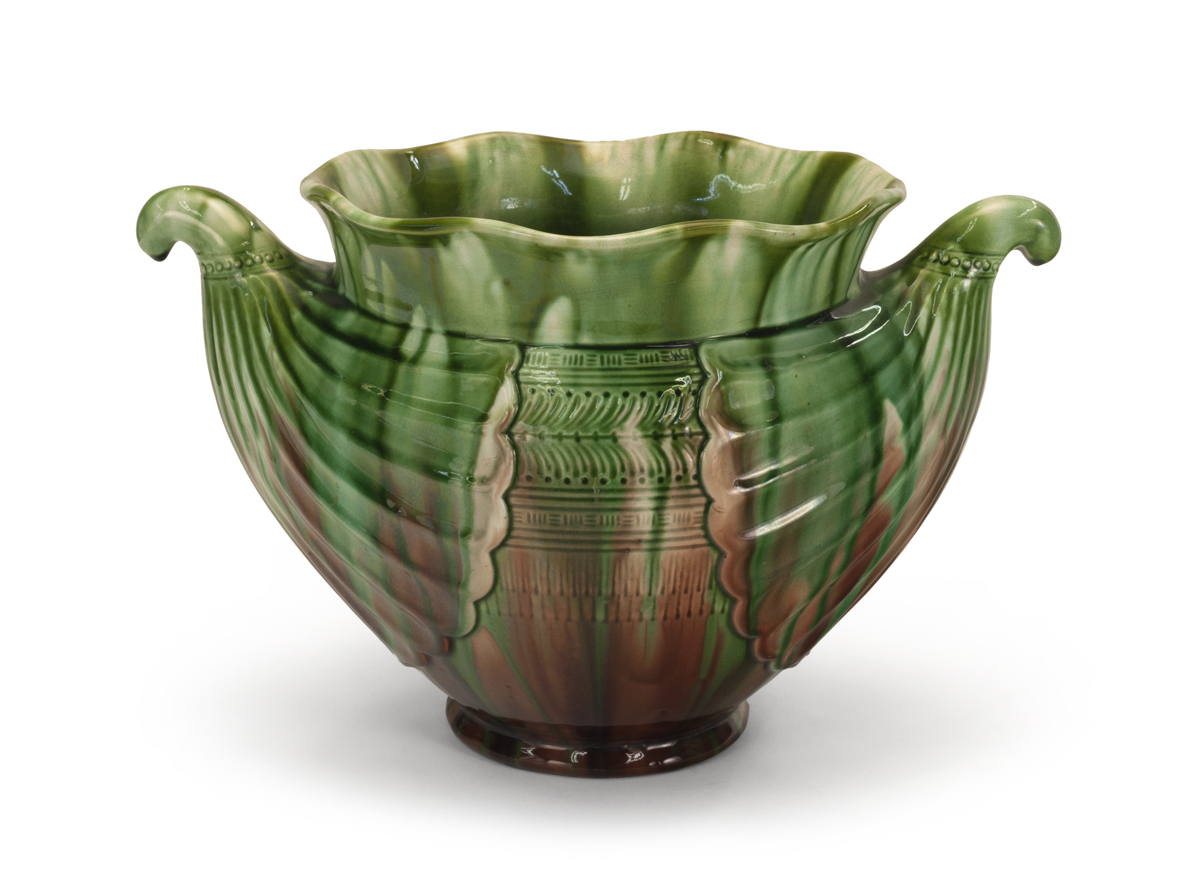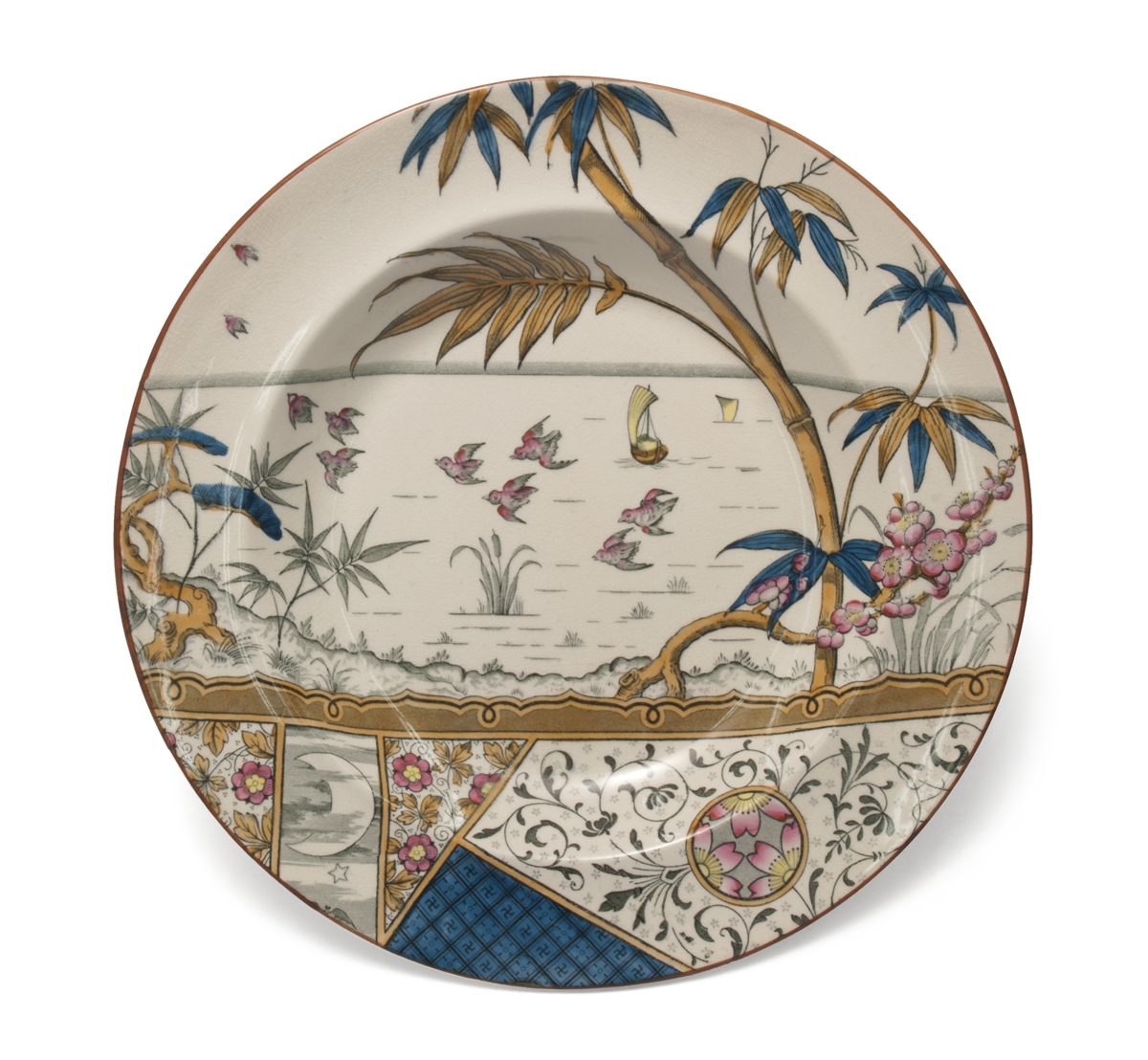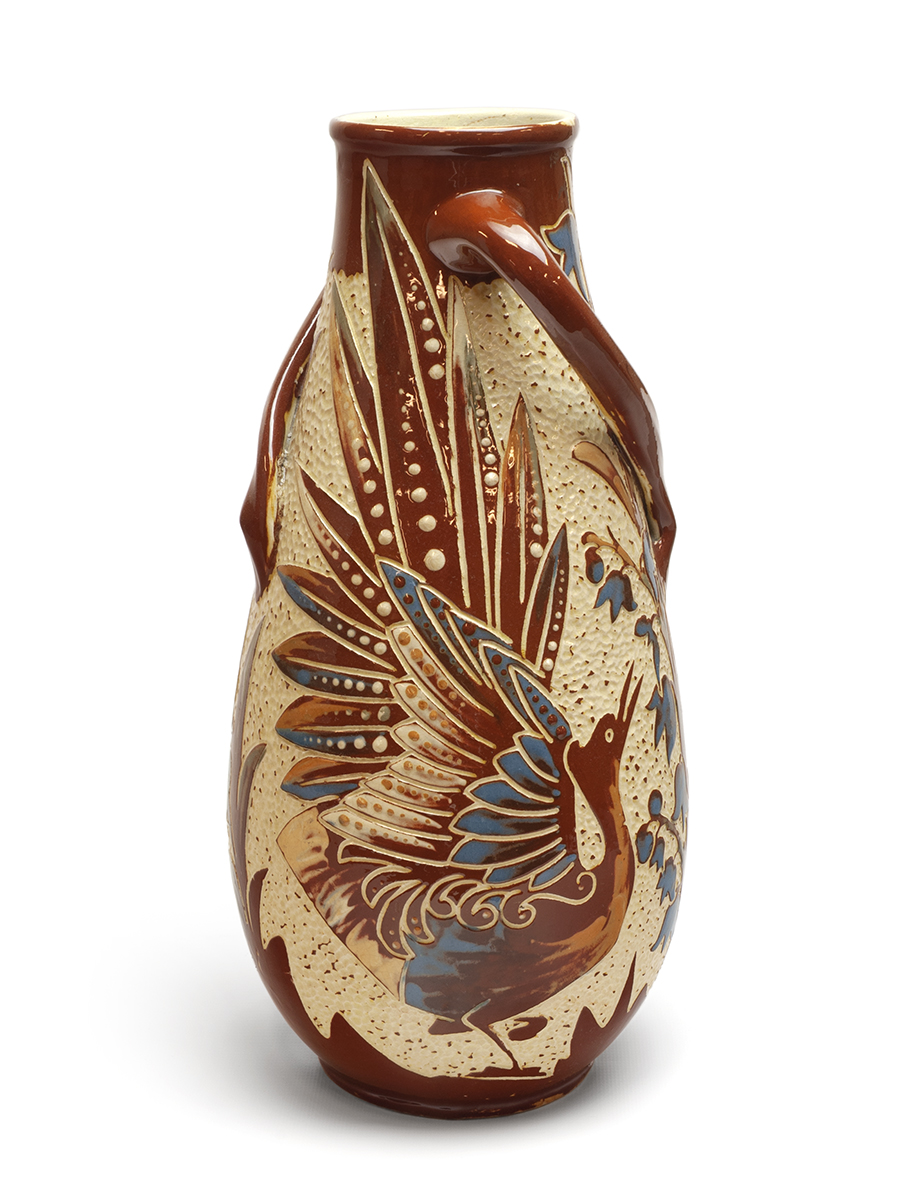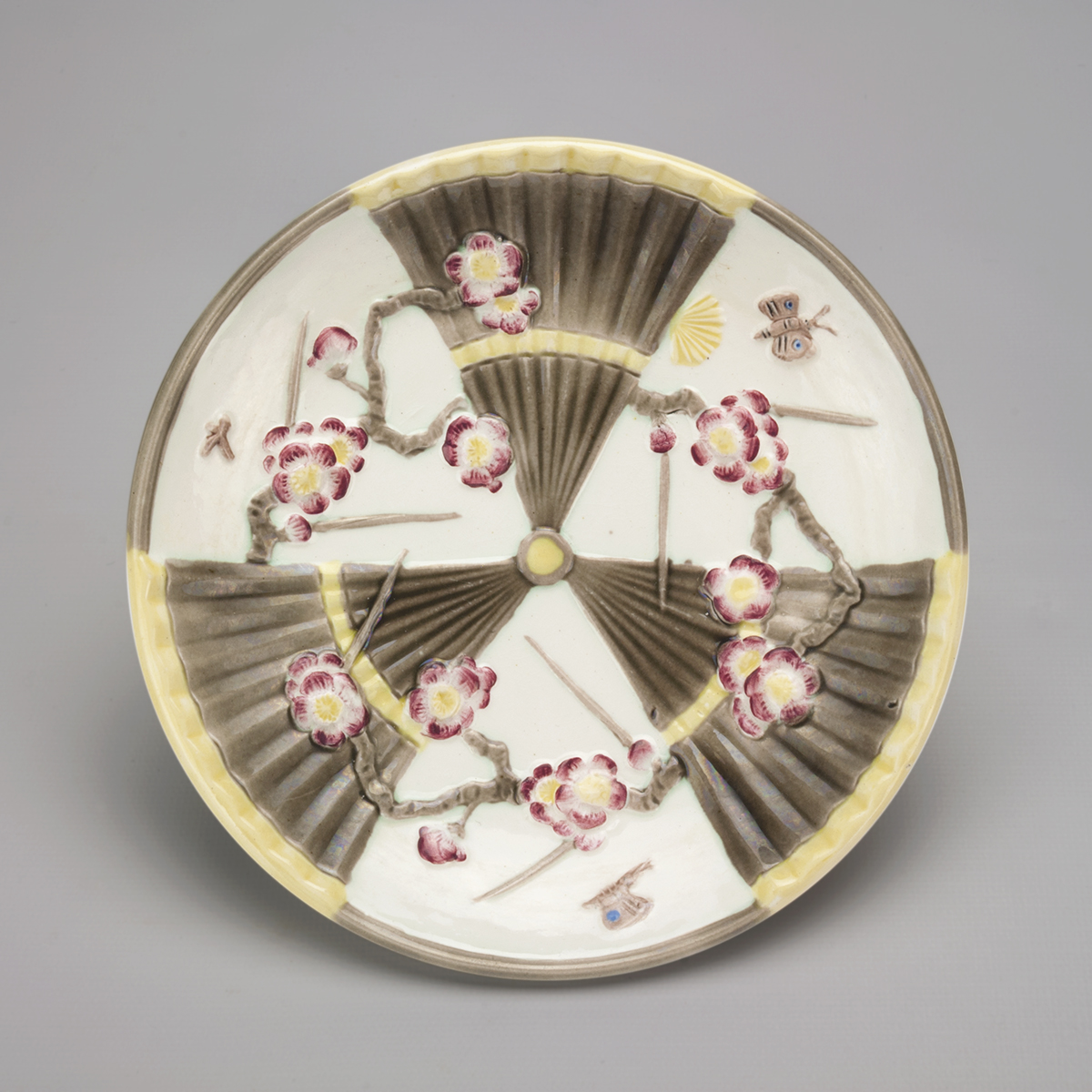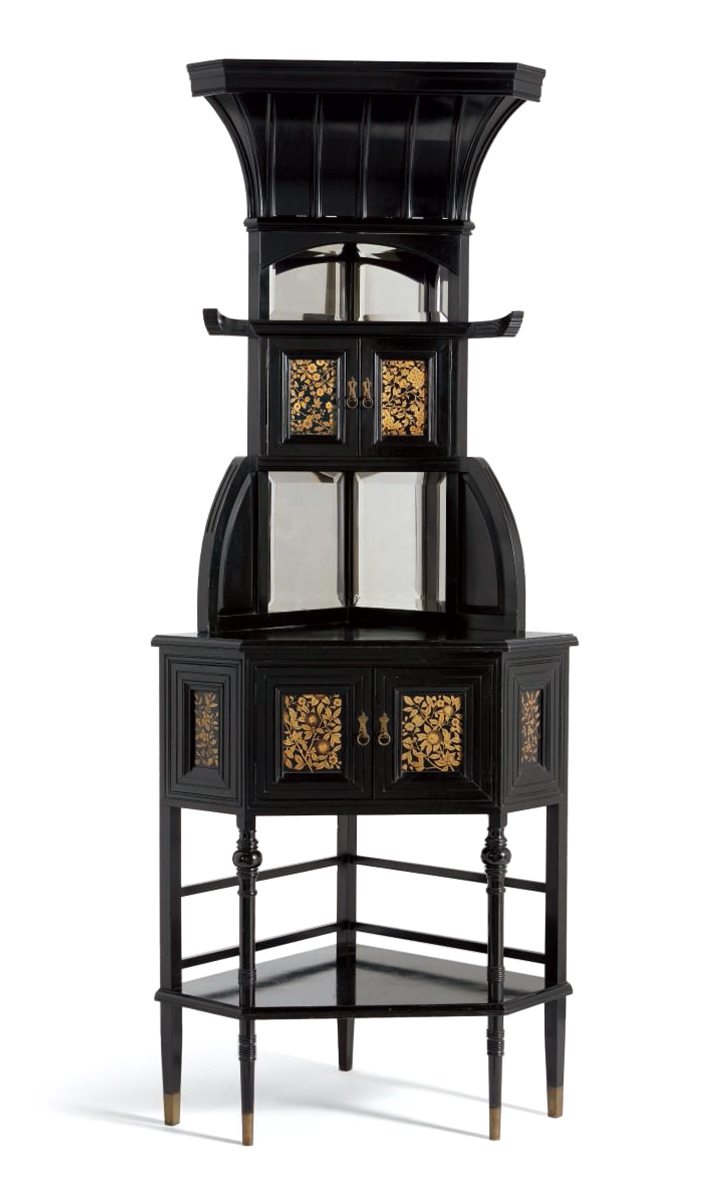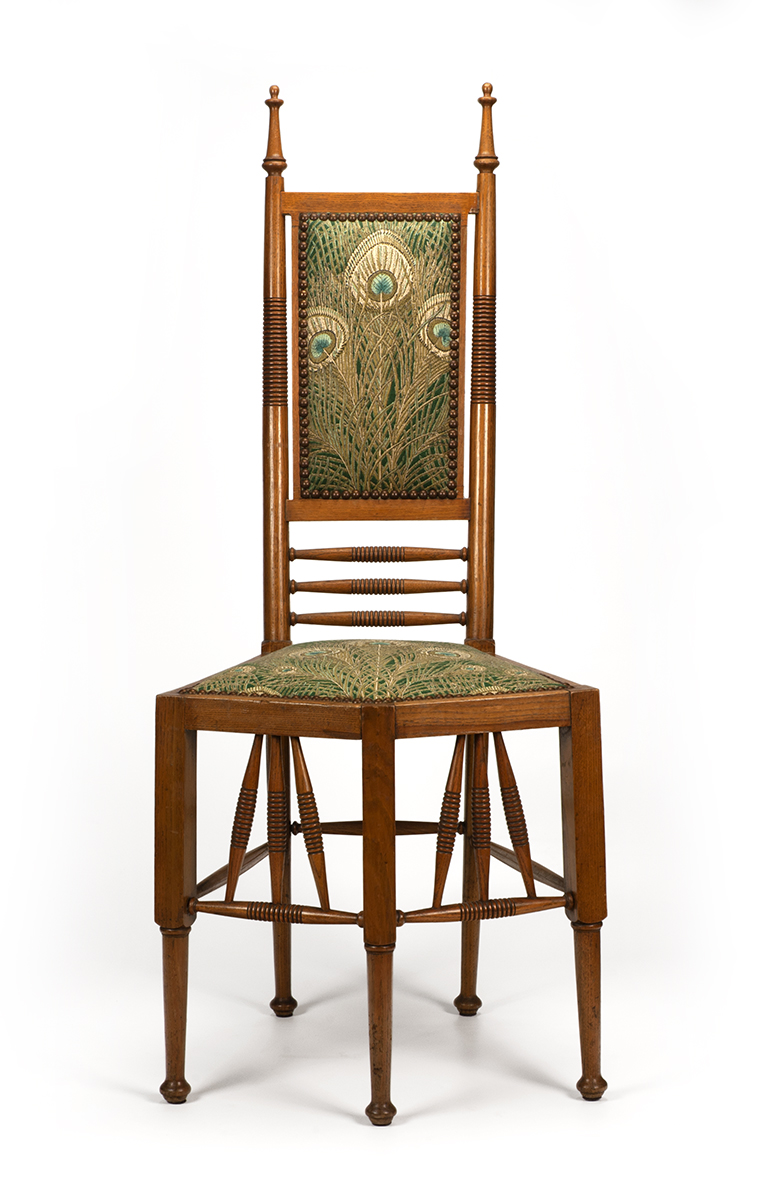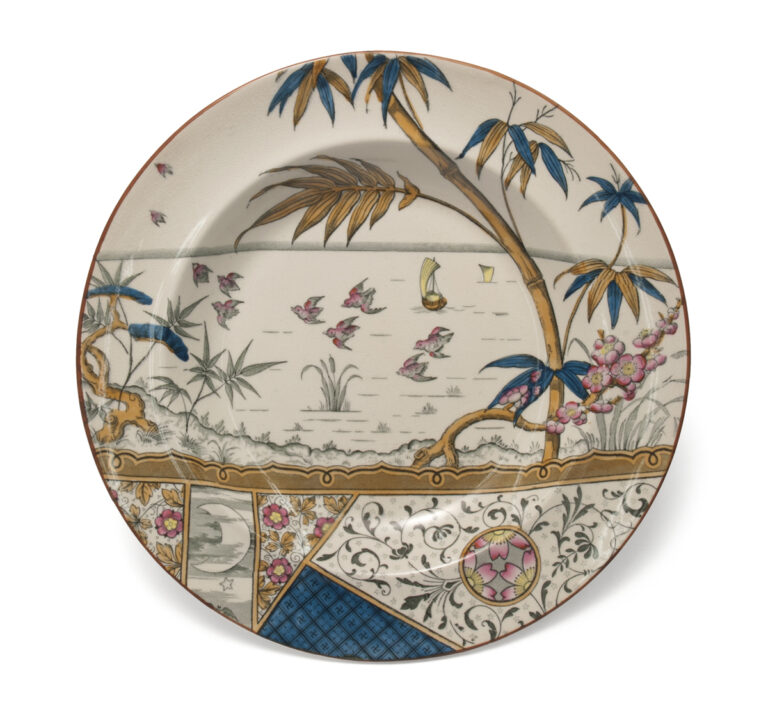
Melbourne Bowl
Design Date 1881
Manufacturer Gildea & Walker (1881–1885), Longport, Burslem, Stoke-On-Trent, Staffordshire, England
Media earthenware with transfer print
Dimensions 1 1/8 x 9 1/8 x 9 1/8 inches
Transfer-printed patterns became popular in the Staffordshire, England, pottery industry during the late eighteenth century, a trend that continued into the nineteenth century, when this Melbourne bowl was made by Gildea & Walker. In transfer-printing, a design is carved into a copper plate, which is then coated with different colors of ink. A thin piece of tissue paper is pressed onto the copper where it picks up the ink, then it is pressed onto the pottery to be decorated. Once the inked design has transferred to the ceramic, the tissue paper is removed. Transfer-printing, as opposed to hand-painted decoration, resulted in inexpensive, quickly produced pottery with a uniform, standardized design. Potteries could then issue many different designs because there was less of a time-commitment to produce them. The asymmetrical Melbourne design was influenced by Japanese paintings, which became popular in Europe in the late nineteenth century, after trade opened between Japan and the West. This motif combines images of bamboo, tropical leaves and semicircular shapes filled with collages of decorative patterns.
ON VIEW in Arts & Crafts Gallery 3
Markings Bottom impressed "GILDEA & WALKER / IVORY"; handwritten in red: "a9722 / K"; stamped in blue "MELBOURNE / 1789 / G. & W. / LATE MAYERS" and "IV / 27/ 9 Rd E / R"
Credit Line Collection Kirkland Museum of Fine & Decorative Art
Accession Number 2004.3375

